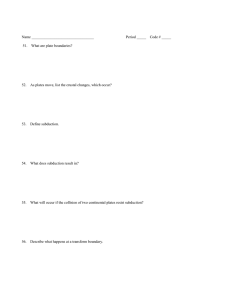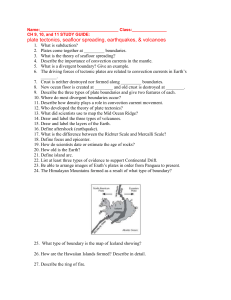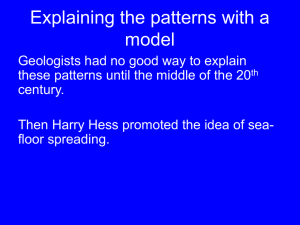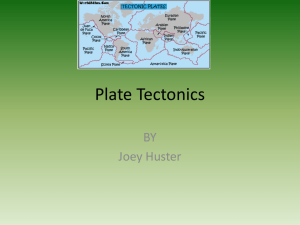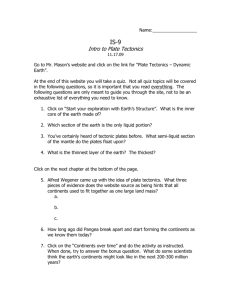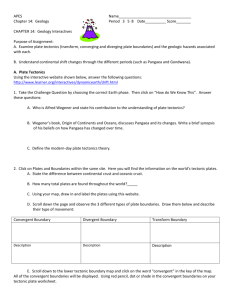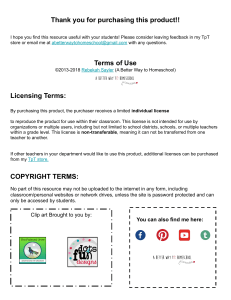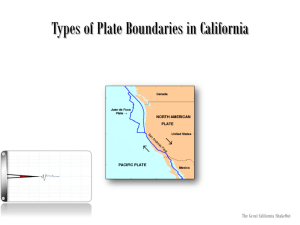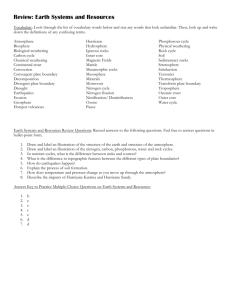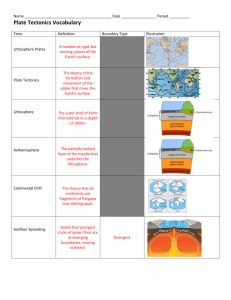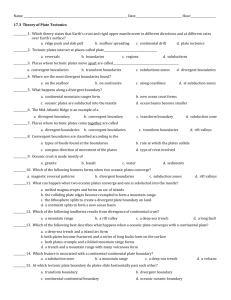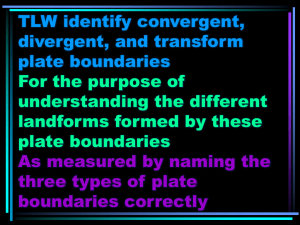Concept 1 Sample
advertisement
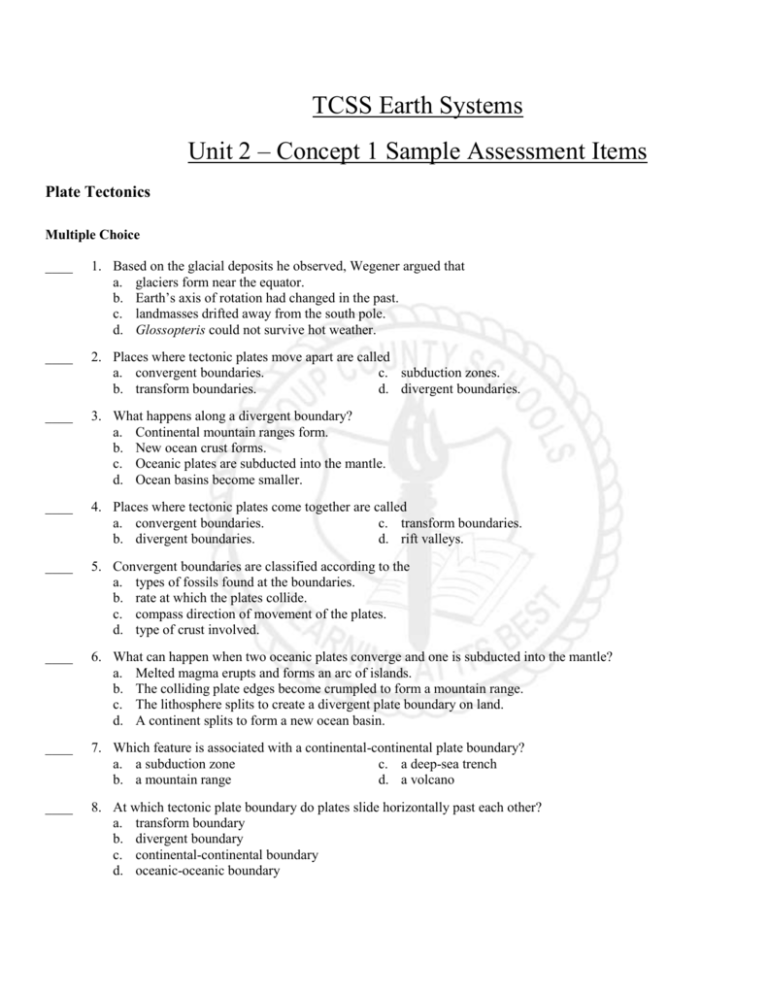
TCSS Earth Systems Unit 2 – Concept 1 Sample Assessment Items Plate Tectonics Multiple Choice ____ 1. Based on the glacial deposits he observed, Wegener argued that a. glaciers form near the equator. b. Earth’s axis of rotation had changed in the past. c. landmasses drifted away from the south pole. d. Glossopteris could not survive hot weather. ____ 2. Places where tectonic plates move apart are called a. convergent boundaries. c. subduction zones. b. transform boundaries. d. divergent boundaries. ____ 3. What happens along a divergent boundary? a. Continental mountain ranges form. b. New ocean crust forms. c. Oceanic plates are subducted into the mantle. d. Ocean basins become smaller. ____ 4. Places where tectonic plates come together are called a. convergent boundaries. c. transform boundaries. b. divergent boundaries. d. rift valleys. ____ 5. Convergent boundaries are classified according to the a. types of fossils found at the boundaries. b. rate at which the plates collide. c. compass direction of movement of the plates. d. type of crust involved. ____ 6. What can happen when two oceanic plates converge and one is subducted into the mantle? a. Melted magma erupts and forms an arc of islands. b. The colliding plate edges become crumpled to form a mountain range. c. The lithosphere splits to create a divergent plate boundary on land. d. A continent splits to form a new ocean basin. ____ 7. Which feature is associated with a continental-continental plate boundary? a. a subduction zone c. a deep-sea trench b. a mountain range d. a volcano ____ 8. At which tectonic plate boundary do plates slide horizontally past each other? a. transform boundary b. divergent boundary c. continental-continental boundary d. oceanic-oceanic boundary
